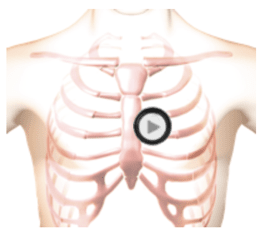Aortic Regurgitation - Moderate C300 Auscultation Practice
Aortic Regurgitation - Moderate C300
Research studies have demonstrated that listening to a heart sound for 2-3 minutes can help students master auscultation.
For textual descriptions, waveforms and heart animations, please use our courses on this website.


Listening Tips
S1: Reduced intensitySystole: Click follows S1
S2:
Diastole: high-pitched, musical decrescendo murmur, early diastole